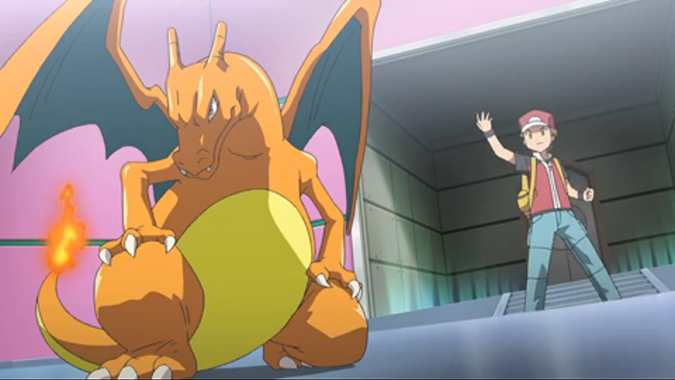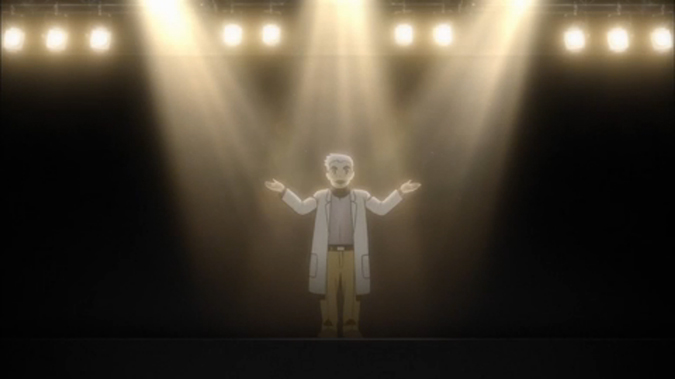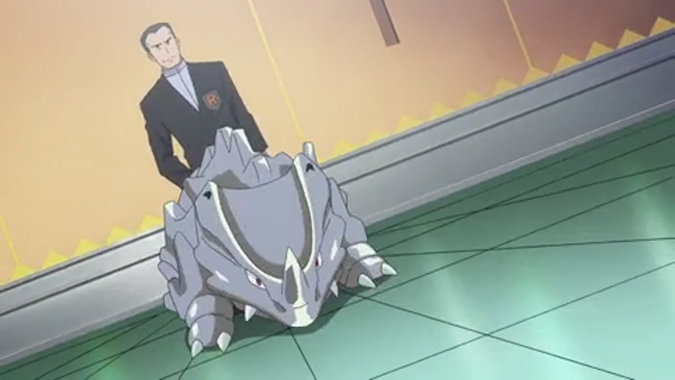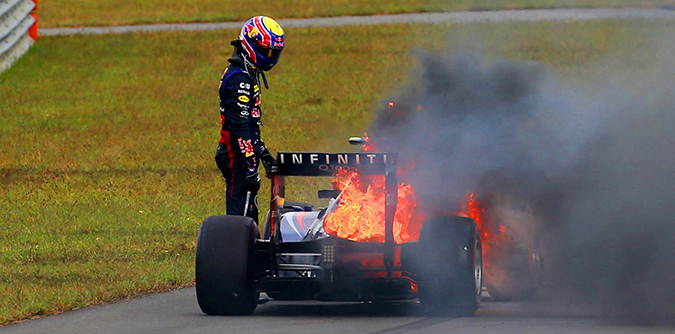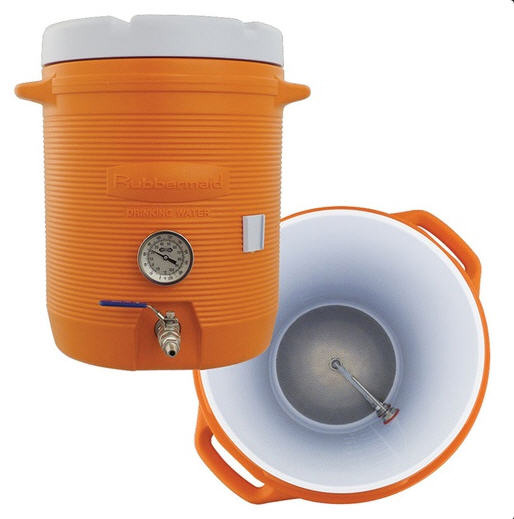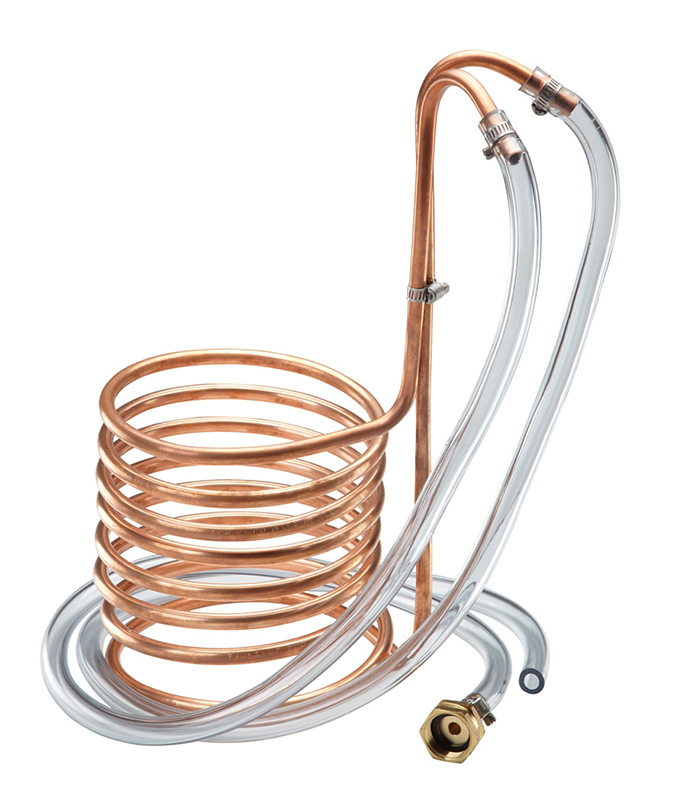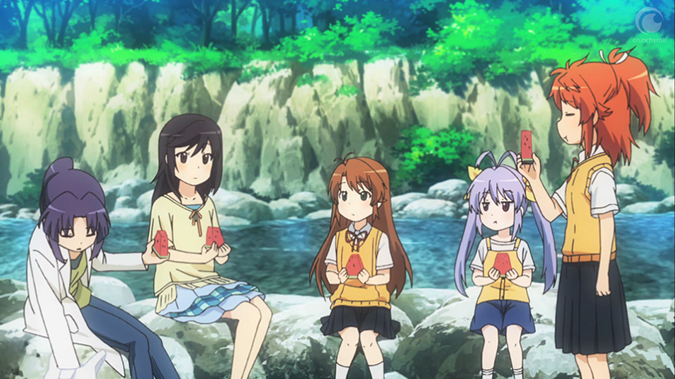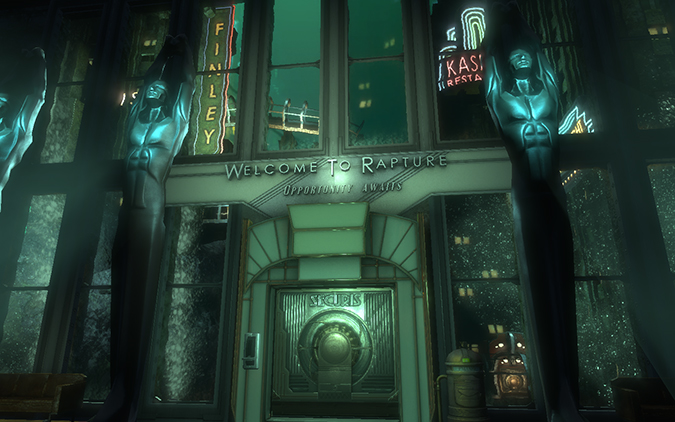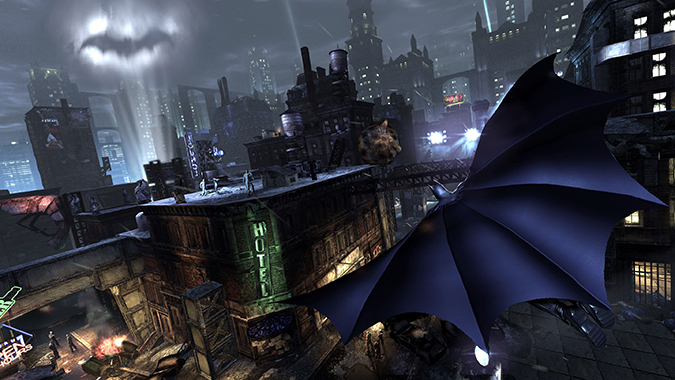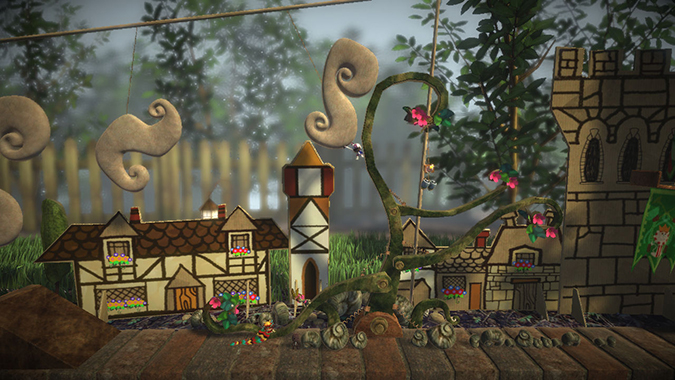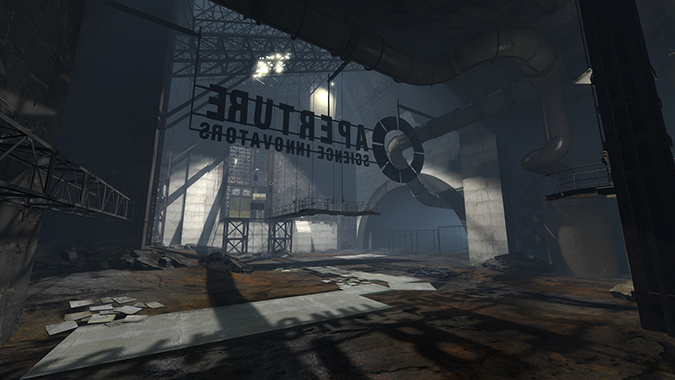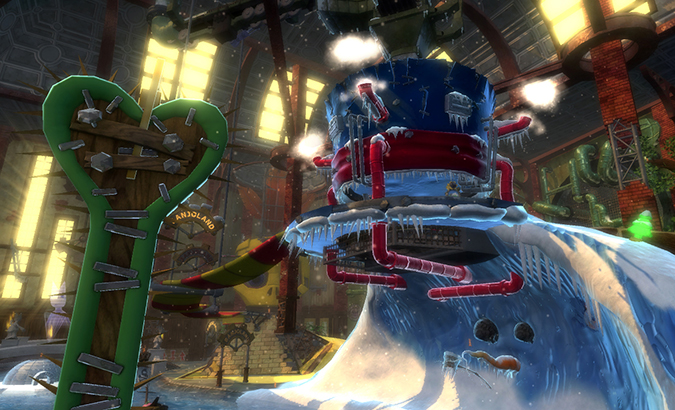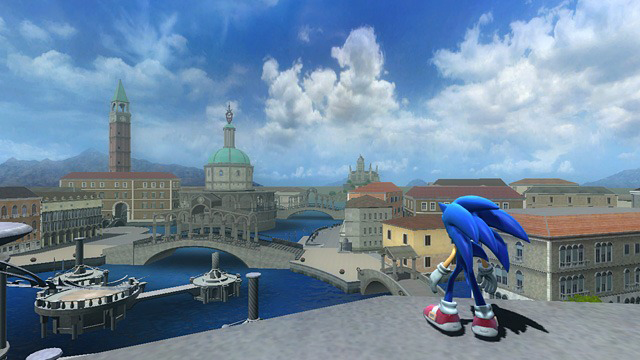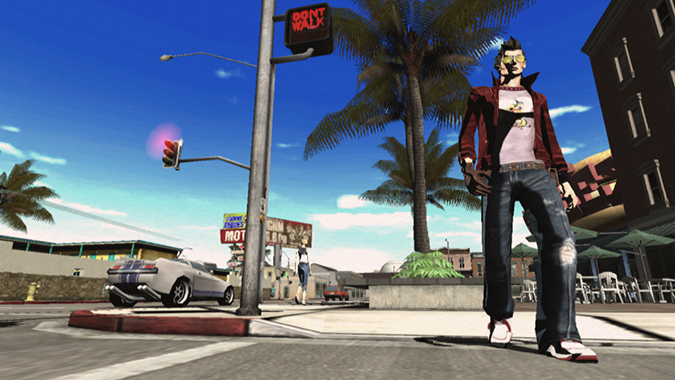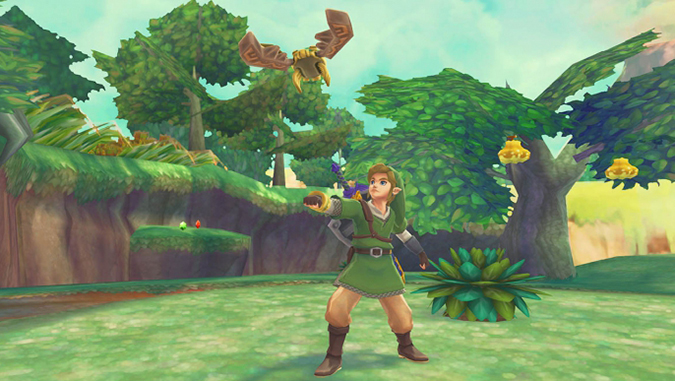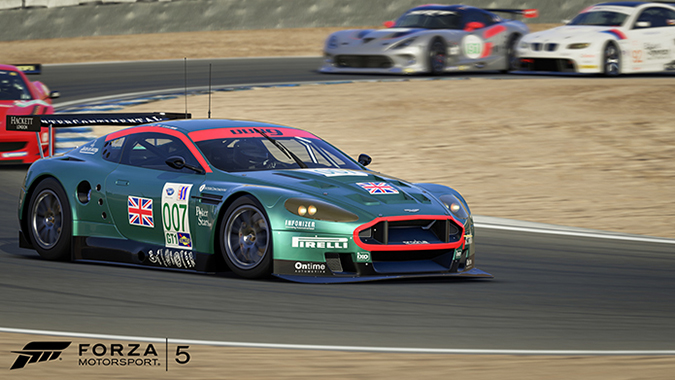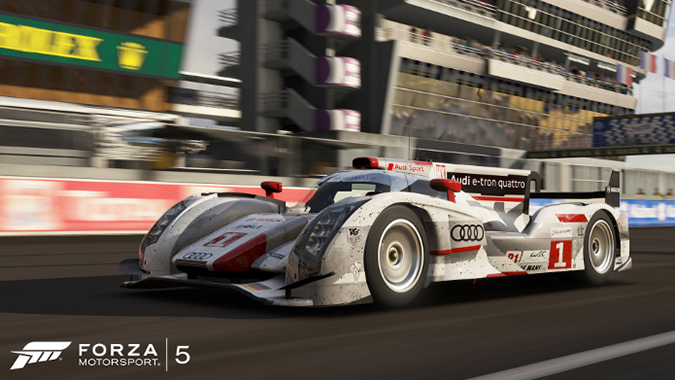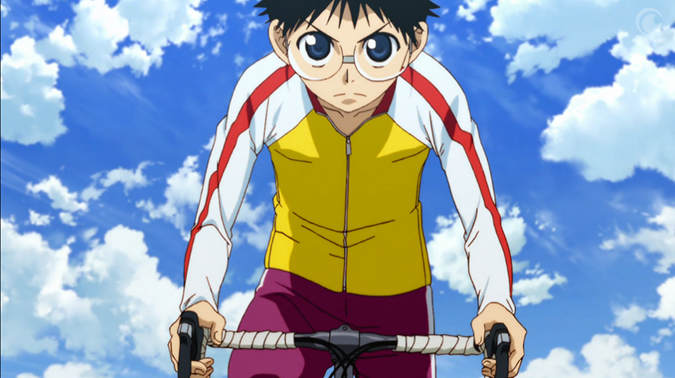Mr. Shark the shark puppet has a close encounter with a stapler while trying to review Samurai Flamenco.
What a crazy week it has been in the world of television fandoms. The BBC aired its much-anticipated Doctor Who fiftieth anniversary special, and on the same day the Bronies donned their pastel-colored shirts and costumes for the premiere of the fourth season of My Little Pony: Friendship is Magic. With all this excitement, I doubt people also knew that last week the English dub of Pokémon Origins was released on the official Pokémon website.
If you didn’t hear about it when the original Japanese version released last month, Pokémon Origins is a four-episode spin-off of the original Pokémon anime series. Instead of following the adventures of Ash Ketchum you watch the journey of Red, the main character from the original Pokémon Game Boy games, Pokémon Red and Blue. The four episodes of Pokémon Origins highlight some of Red’s adventures in Kanto, the same adventures you experienced in the original games.
I marathoned the four twenty-minute episodes the day they were released and, like so many other cartoons and movies, the show had some ups and downs.
Before I continue, I should mention there are some SPOILERS AHEAD, although if you played Pokémon Red or Blue I doubt the moments I highlight from the anime will be anything too new or shocking…
I will say the one thing I loved most about Pokémon Origins first and foremost: these four anime episodes were a serious trip down memory lane to anyone like myself who grew up playing Pokémon on their Game Boy for hours on end until the batteries died. The animators took great care to include plenty of homages to tons of moments in the game. For example, each episode starts and ends with a recreation of the menu screen from Pokémon Red and Blue. A disembodied player selects “continue” at the start of each episode (except for Episode One, where the cursor naturally points to “new game”), and each episode ends with this unidentified “player” saving his progress. The layouts of the many cities and building interiors of Kanto look exactly as they did in the games as well, and are subtle but pleasing pieces of detail for the nostalgic Pokémon fan. The soundtrack, too, is a giant homage to old-school Pokémon. Throughout the miniseries you’ll easily find yourself humming to re-mastered versions of your favorite classic Pokémon songs. And finally, in this version of Kanto you won’t find Pokémon saying their names; the pocket monsters all have distinct, animal-like calls that sound similar to the various calls you heard in the creatures’ Pokédex entries.
Dialogue from the Game Boy games was perfectly recreated as well. Both times we see Red healing his Pokémon at a Pokémon Center, the nurse returns the Poké Balls to Red while assuring him that “your Pokémon are fighting fit!” Also the introduction you receive from Professor Oak welcoming you to the world of Pokémon at the start of the first episode looks exactly like the introduction you get from him at the start of Red and Blue. His speech is verbatim to what you read in the dialogue boxes. The single spotlight shining down on Oak is also a nice touch. The only thing that disappointed me about the dialogue in Pokémon Origins was that there were many famous lines from the game that they chose not to include. I was hoping for a little eight-year-old trainer to at one point run up to Red and randomly shout, “I like shorts! They’re comfy and easy to wear!” But alas, that classic video game line was one of the many parts of the game the animators chose to cut.
Apart from some dialogue, a lot of notable parts of the original game’s story were cut in Pokémon Origins. With only four twenty-minute episodes, the miniseries only focuses on a few key events from Red’s journey. Episode One includes Red’s first battle with rival Blue and his earning the Boulder Badge from Brock at the Pewter City Gym. The second episode takes place in Lavender Town where Red encounters the ghost of Marowak in Pokémon Tower. In Episode Three Red saves Silph Co. from Team Rocket, then the episode skips ahead to his battle with Team Rocket boss Giovanni at the Viridian Gym. Finally, Episode Four prominently features Red’s final battle against Blue for the title of Pokémon League Champion and then Red’s journey into Cerulean Cave where he confronts Mewtwo. While they are briefly shown in montages, we missed full battles with six of the Gym Leaders and even the battles against the Elite Four. This is especially disappointing when the battles are the best part of Pokémon Origins: compared to the main anime, the battle scenes are very well-animated and are also coupled with great commentaries by the battling trainers as they think about what moves to make next. To tell Red’s story in a way that feels more complete, Origins could have benefitted from one or two more episodes.
But for what little we got, some of the characters were incredibly dynamic. I was on the brink of tears watching the flashback to the death of baby Cubone’s mother in Episode Two. And while it seemed a bit out of place for the notorious crime boss, Giovanni had a powerful change of heart during his battle with Red in Episode Three that actually made me feel an emotional connection to the Pokémon world’s most infamous villain.
I will say that the biggest disappointment for me watching Pokémon Origins came within two minutes of Episode Four’s conclusion. Without giving away what and how it happens, I’ll say that I grew incredibly frustrated when the writers shoehorned what was essentially a commercial for Pokémon X and Y into Red’s battle with Mewtwo. For a miniseries that was ninety-nine percent a tribute to the early days of Pokémon, the shameless promotion of the new games felt incredibly out-of-place.
Pokémon Origins could have been a lot longer than it was; heck, it could have been its own full anime series. I would have much rather joined Red on my Saturday mornings growing up than Ash Ketchum. The short length of the series, combined with what can only be described as a sell-out ending, tarnished this anime from being a perfect revisit to Kanto for older Pokémon fans. But despite the flaws, Pokémon Origins has plenty of moments that will make you cry tears of nostalgic joy that definitely makes it worth a watch.
The Minus World is written by Steven Brasley. You can keep up with his thoughts on gaming via Twitter.
With last Sunday’s race, Formula One wraps up its 2013 season with a fourth consecutive title for Red Bull Racing and Sebastian Vettel. The year was an interesting mix of unpredictability and inevitability, as the winning team and driver marched their way to victory through a mire of tire-related mayhem. With massive changes to regulations and team lineups on the horizon, I though I’d make four predictions for 2014, one for each consecutive Red Bull championship.
1: Fernando Alonso and Kimi Raikkonen will run each other off the track at least once.
Putting to top-level drivers in the same F1 team has usually taken each of them off the other’s Christmas card list by the end of the season. Prost and Senna at McLaren. Hamilton and Alonso, also at McLaren. Webber and Vettel at Red Bull. The point is, world champions do not work and play well with others, at least when “others” means “equally fast drivers.” Alonso is already clearly unhappy with Ferrari’s inability to provide him with a decent car, so bringing in Raikkonen can’t have improved is mood. Raikkonen has little tolerance for intra-team politics, yet is headed into a team famous for exactly that. At some point in 2014, someone’s engineer will ask him to let the other guy through, and the response will go viral faster than any of Raikkonen’s radio transmissions from the 2012 Abu Dhabi Grand Prix.
“Yeah, yeah yeah, I’m blocking Fernando all the time. You don’t have to remind me every second.”
2: Felipe Massa will excel at Williams and no one will notice.
While his racing form has been inconsistent over the last few years, Massa’s performance is actually somewhat predictable. Put him under pressure and he makes mistakes, take it away and he starts driving well again. Stepping into a midfield team without any championship ambitions will take an enormous amount of weight off his shoulders, and we all know that less weight means more speed in a race car. The Williams team will prove to be a good environment for Massa, but his inevitable displays of talent will go unnoticed by the press at large as he spends the season running with the midfield. Small teams mean less pressure, but they also mean less attention. Look for Massa to do well, and listen for the commentators to say nothing about it.
3. Either Caterham or Marussia will score their first championship point.
New engines and new rules mean one thing for next season: unreliable cars. As the teams struggle to understand their new equipment, look for an increased number of engines and other parts going, as Steve Matchett would say, “kablammo.” With the leaders and midfield teams pulling off track in a cloud of smoke more often, the perennial backmarkers of F1 will have their best chance ever to pick up that elusive first point. My money’s on Marussia’s Max Chilton, who was 19 for 19 in finishing races this season.
I prefer “kablooie” myself, but who am I to contradict the experts?
4: Nico Hulkenberg will leave the sport to drive in IndyCar.
The tall and talented gentleman from Germany has had a tough time in F1, and has never really had a car in which to display his true skill. With virtually every team in dire financial straits, he’s had difficulty finding a good race seat without the absurd amounts of sponsorship money that certain unnamed drivers can bring to the table. Things will only get worse next year, as many analysts are predicting that a poorly calculated minimum car weight will make life incredibly difficult for taller (and therefore heavier) drivers. Enter IndyCar, where a resurgence of popularity has made sponsors easier to find and the stock Dallara chassis seems to fit drivers of a wide variety of heights. A driver of Hulkenberg’s talent can only be given the short end of the stick so many times before he decides to try his luck elsewhere, and F1 seems to be making it very easy for IndyCar to lure him away at the end of 2014.
Pit Box One is written by Paul Jensen. You can follow his thoughts on video games and motor racing on Twitter.
Let’s Brew!
In the last edition of SPP, we talked about the key ingredients in beer: water, barley, hops and yeast! Now, these are by no means the only ingredients that make up beer, but in its most basic form, those are all it takes. Ready to dig in and get dirty? Hang on! There’s one really important thing to know before we do that: A brewer needs to understand that their first job is to be an excellent cleaner. You see, a brewer is essentially a glorified janitor. You are constantly sanitizing and scrubbing and cleaning so that those yeast cells are happy. After all, would you want to feast in a dining room full of harmful bacteria and mold? Or worse yet, have some wild yeast trying to steal your dinner?! I would think not. Remember, cleanliness is next to beerliness!
Ok now that that’s settled, let’s look at the process.
The mash: This is the first main step in the process. Barley and other grains that are used in the recipe are soaked in hot water (generally between 150 and 160 degrees). This process goes on for about an hour and ensures that all of the necessary sugars are being released from the barley. This is done in a piece of equipment called a mash tun. Mine is made out of a Gatorade water cooler as most home brewers are.
The sparge: Sparging is basically a fancy word for rinsing. Most brewers will use a combination mash/lauter tun (abbreviated MLT). This is a mash tun that includes a false bottom. This is essentially a colander that is placed between the draining valve and the grain. Hot water is rinsed over the top of the grain as it is slowly drained into the brew kettle. The hot water ensures that all of the sugars are rinsed off of the grain. You’ll never get all of it, so most brewers shoot for 75% efficiency and will fine tune their recipes accordingly. As you can tell, sugar is extremely important!
The boil: this is my favorite part. The beer is brought to a boil for at least an hour (recipe dependent) and all of the other ingredients including hops, spices, herbs, fruit and anything else you can throw at it, are added to the beer. You now have a very sweet very hot, non-alcoholic version of beer called wort.
Final steps: The wort is chilled using a….yup you guessed it, wort chiller. There are various types of wort chillers or other contraptions like heat exchangers that you can chill wort with. There’s always that incredibly complex thing called snow (really great for chilling beer quickly in the winter). My chiller is made from coiled up copper tubing that you’d find in the HVAC/refrigeration aisle at your local hardware store. Cool hose water goes in one way and hot hose water comes out the other. Once the beer is chilled to about 75 degrees (room temperature) the beer is transferred through a strainer into a large glass carboy, or food safe plastic fermenting bucket. The yeast is then pitched (added).
Give the beer a good shake, as yeast like lots of oxygen, wait a couple of weeks, bottle, and enjoy!
Oh and I almost forgot! The most important rule of them all: Always be sure to enjoy a homebrew (or your favorite beer) as you brew. Just don’t forget to clean up!
Cheers!
Shark Puppet Pub is written by Chris Zaccaria. You can start a drunken argument over his taste in beer on Twitter.
Mr. Shark reviews Golden Time and confronts a ghostly version of his past self.
I’ve been keeping up with the simulcast of Non Non Biyori this season, and at first glance it’s a bit difficult to explain why. Like most shows in the “slice of life” genre, there isn’t really much of a plot to speak of, and any conflicts that arise among the characters are pretty mundane. If I had to summarize the events of the series thus far, I’d say that it’s about four girls who live in a small rural town and occasionally do stuff. People who say they find slice of life shows dull certainly seem to have a point, so what exactly is the appeal here?
Today’s thrilling adventure: eating watermelons by the river!
Normally, the plot of an anime series can be compared pretty easily to the structure of a novel. Each episode is like a chapter in that it has its own beginning and resolution but ultimately serves to advance the story as a whole. The end goal is to tell one long story that causes the characters and world to change significantly by the end. You could conceivably pick a random episode out of the middle of a series and watch it, but it would make about as much sense to you as reading the fifth chapter of a novel.
By contrast, a slice of life show is structured more like a collection of poetry, short stories, or essays on a particular topic. There’s a central theme or idea that’s being explored, but not necessarily an overarching plot to resolve. Each episode offers a small observation or makes a minor point, but it’s mostly self-contained. Like a single poem in a collection, you could watch one episode and get something out of it, though it might not have the same emotional significance without the rest of the work.
To explore this idea a bit further, I’m going to take a look at one of my favorite slice of life shows, and one I use as a benchmark to judge other works in the genre: Aria. Based on the manga series by Kozue Amano, Aria ran for three seasons and a one-shot OVA. In that time, the viewer follows three apprentice gondoliers as they learn to guide tourists around the canals of a future city modeled after Venice. While there is some semblance of a plot as the heroines work their way up the ranks, the story is only really ever advanced in a handful of episodes. The rest of the series is concerned mainly with getting to know the city and its inhabitants. Without any princesses to rescue or dragons to slay, Aria is free to stop and smell the metaphorical roses. The series is obnoxiously sweet and sentimental, but nearly every episode has an observation to make about friendship, personal growth, or finding beauty in ordinary things. It’s like a collection of poems about what it means to grow up and find your place in the world.
There’s also a sci-fi backstory about terraforming Mars, but that’s not important right now.
Like Aria, there’s no way Non Non Biyori would make a good novel. I’ve been trying to figure out exactly what it’s meant to be instead, and the consistently beautiful background art finally clued me in. Watching Non Non Biyori is like flipping through a book of photos that were taken of a tiny rural town in Japan. The characters wander through a series of snapshots, each one a sentimental glimpse of life lived at a leisurely pace in the middle of nowhere. In many ways, the setting is the star of the show.
Seriously, there’s literally an episode where the characters wander around and take photos of stuff.
I suppose the point here is this: if you look to anime for its epic storylines and frenetic energy, you probably won’t get much enjoyment out of the slice of life genre. If, however, you’re willing to adjust your expectations for a different kind of storytelling, you might have a new experience altogether. When the atmosphere is allowed to upstage the story, the result can be a fascinating, immersive experience.
Kawaii Overthink is written by Paul Jensen. You can follow his ramblings about anime on Twitter.
It’s hard to believe seven years have already come and gone, and now we’re at the dawn of a new generation of gaming consoles. With the PlayStation 4 launching last weekend and the Xbox One launching this Friday, I too have been looking back at some of my favorite gaming memories on the Wii, PlayStation 3 and Xbox 360. “There were some magnificent game universes introduced to us on these three consoles, weren’t there?” I thought to myself. But then I realized, not all of my memories were golden.
As such, I put together two lists. First up, the five best video game worlds to come out of the last console generation. Bear with me after that though, as I give you the five absolute worst worlds designed in the last seven years.
The Five BEST Video Game Worlds:
1. Rapture – BioShock
At first it was difficult to choose between Rapture and BioShock Infinite’s Columbia, but in the end I knew which of these two cities needed to be included in the list. To this day, Rapture stands as one of the most immersive video game worlds I have ever experienced. I could spend hours taking down Splicers while exploring the ruins of what was once the classiest city in the world, reminiscing about what Rapture was like in its prime (Before Burial at Sea came and actually showed me Rapture in its prime, that is).
2. Arkham City – Batman: Arkham City
In my last installment of The Minus World, I talked about how I had just started playing Batman: Arkham City. Now that I have completed the main campaign and am now tackling the side missions, I completely understand the praise of the game’s titular overworld. A dark, crumbling city packed with every famous Batman villain where you solve seemingly endless crimes as the Caped Crusader himself: it’s as awesome as it sounds.
3. LittleBigPlanet – LittleBigPlanet series
The world of LittleBigPlanet was probably one of the most creative to have come out of the last console generation. Almost made to look like a diorama put together in a grade school art class, LittleBigPlanet was one of the cheeriest-looking places I have visited in a platformer since the days of classic Mario.
4. Aperture Laboratories – Portal series
Over the course of both Portal games, I’ve wanted to explore the seemingly endless passageways of this diabolical underground science facility more and more. In the first Portal you merely get a taste of Aperture Labs as you carefully traverse the gleaming white test chambers, finally running through the decomposing backstage areas in the last fourth of the game. By Portal 2 you finally learn the scale of this abandoned facility, traveling all the way to the bottom of the converted mine shaft Aperture was built in to discover the original “testing spheres” operated by Cave Johnson. Aperture Laboratories is a massive world as rich in history and backstory as the sarcastic, homicidal AI that runs it.
5. Pandora – Borderlands series
In a series that focuses on hunting treasure, there naturally has to be a huge overworld to explore. Pandora really gives you a sense of adventure as you travel across its dangerous terrain. This world is so massive it’s practically impossible to travel from one end of a map to the other on foot. In addition to the sense of adventure you get from its perils and scale, Pandora is also beautiful to look at, especially with the cel-shaded textures that the Borderlands series has become known for.
All right, those were easily the best game worlds of the last console generation. Now I apologize in advance for sharing the worst gaming worlds from the last seven years…
The Five WORST Video Game Worlds:
1. BanjoLand – Banjo-Kazooie: Nuts & Bolts
For once, I’m not talking about an entire overworld world but rather an individual level. Being a huge fan of the original Banjo-Kazooie games on the Nintendo 64, at first I was excited hearing about the “Banjo-Kazooie museum” nostalgia level included in Nuts & Bolts. Then I found out that many of the “artifacts” from classic Banjo-Kazooie levels were carelessly ripped from their homes and thrown about the museum. The snowman from Freezeezy Peak is half-melted. Clanker, the mechanical shark from Clanker’s Cavern, was torn to pieces; his sad-looking eyes follow you as you walk by the top of his head, which is bolted to the floor. BanjoLand was less a tribute to the original Banjo-Kazooie games and more of a slap in the faces of the series’ loyal fans.
2. Soleanna – Sonic the Hedgehog (2006)
This overworld is empty. The only thing Soleanna accomplishes is being a time waster as you travel to the next level. Sure, there are side missions you can complete, but what’s the point? Most of them serve no purpose other than being a brief diversion. Apart from that, your characters can’t interact with most of Soleanna’s stoic-faced zombie citizens. And let’s not forget that this overworld is home to one of the worst boss fights of all time. It’s no use, indeed.
3. The Minecraft Universe
Oh, I’m not saying Minecraft is a bad game at all. Honestly, the world of Minecraft should be in my “best worlds” list above but I ran out of room up there. Okay, since it’s here, let’s think of something bad about Minecraft. It… uhh… wastes a lot of my time? Yeah. I waste way too much time playing Minecraft because it’s so easy to get lost in that big, blocky world for hours on end. There, that should do.
4. Santa Destroy – No More Heroes
Don’t get me wrong. I love No More Heroes. It’s easily the most underappreciated game on the Wii. But its overworld, the city of Santa Destroy, is so boring. You can drive Travis around on his motorcycle to get to various destinations, but there’s no further depth to it besides that. Oh yeah, you can run over people and trees, but that’s only funny for about five minutes. There are no ramifications for you doing that. The people you run over just get up and go on their merry way. The map had tons of potential; Santa Destroy could have easily been a Grand Theft Auto-like sandbox world that offered tons of other activities besides the main campaign, side missions and jobs. But instead of further developing the world for No More Heroes 2: Desperate Struggle, Suda51 took a step backwards and scrapped the overworld in favor of a menu screen. Worst decision ever.
5. Hyrule – The Legend of Zelda: Skyward Sword
After loving the various versions of Hyrule we saw in Ocarina of Time and Twilight Princess, the massive Great Sea in Wind Waker and Termina in Majora’s Mask, the version of Hyrule we got in Skyward Sword felt so small and redundant. There were only three areas in Hyrule: a forest, a desert, and a volcano, all three of which we have seen in a previous Zelda game to some capacity. It was also disappointing seeing how little the new element of flying in the sky was played up. I was hoping to sail across a sky that would be even larger than Wind Waker’s Great Sea. Instead, I explored Skyloft, a few small rocks floating around it, and… That was about it. Perhaps I went into the game with my expectations set too high, but regardless my adventures through Hyrule in Skyward Sword didn’t feel nearly as grand as other Zelda games in the much smaller world I traveled through.
The Minus World is written by Steven Brasley. You can keep up with his thoughts on gaming via Twitter.
The launch of the Xbox One is nearly upon us, which wouldn’t be particularly interesting to racing gamers if it weren’t for one very important game: Forza Motorsport 5. To make the last few days of waiting easier, I’ve come up with a few ways to keep your gearhead brain occupied. After all, if you’re anything like me, you’ve already worn holes in the floor with endless amounts of impatient pacing.
Step 1: Play the old games.
You know what makes a shiny new next-gen video game look even fancier? Having just played its predecessor. Take this final handful of days to take one last spin in FM4 or Forza Horizon. Say goodbye to that special, favorite car that you spent hours tuning and modifying to be just right. Give that lap record you’ve been trying to break one more shot. Wrap up that single-player event you never got around to, or challenge your biggest rival to a grudge match. Chances are you won’t play the old games again any time soon, so send them out with a bang.
Step 2: Apologize in advance to friends and family.
Let’s be realistic here. Not all of your loved ones share your passion for virtual driving. Considering the only people you’re going to talk to for the next few days will be on Xbox Live, you’re probably going to be ignoring a pretty big percentage of your acquaintances. Warning them in advance may not spare you from their wrath, but you’ll at least be able to say “I told you so” when they’re somehow still surprised that you haven’t called them back all week.
“These ARE my friends, Mom! Jeez!”
Step 3: Stock up on provisions.
You’ve been here before. You know the drill. You spend twelve hours playing a new Forza game, then discover to your horror that you’re out of things to eat and drink. You get in your real-world car and are pulled over five minutes later for trying to take the racing line through a four-way intersection. The police aren’t interested in your explanation that cutting across the sidewalk/apex is the fastest way to make a left turn. Save yourself the embarrassment of mixing up Forza and real life by making sure you don’t need to leave the house halfway through a marathon session.
Step 4: Practice your fake engine noises.
The developers at Turn 10 have spent untold time and money making sure that every car in the game sounds like its real-world counterpart, but that won’t stop you from adding your own sound effects. Make sure your vroom-vrooms can adjust in pitch to match different engine displacements, and that your squealing tire shrieks aren’t the same for braking and drifting. After all, if you can’t pretend to sound like the imaginary car you’re driving, what’s the point of even playing?
Give me your best diesel-electric hybrid noise. See? You’re not ready.
Step 5: Get some sleep.
When was the last time you willingly gave up consciousness during the first night with a new game? Chances are you’ll wake up the next day, surrounded by empty soda cans and snack food wrappers, wondering what time it is and when exactly you passed out. Your virtual McLaren will still be buried in the tire wall that it smashed into when your body finally shut itself down. Before that happens, make sure you’ve slept well in the previous few days. Otherwise, it’s going to be a tough weekend.
Got all that? Good. Now you can go back to walking an endless circle around your living room while trying to decide what legendary car and track to take on first. Rest easy, friend, because you’re ready to binge on some proper next-gen simulated racing.
Pit Box One is written by Paul Jensen. You can follow his thoughts on video games and motor racing on Twitter.
Mr. Shark reviews an anime series about teenage angst and underwater racism, then makes a bunch of lame Disney jokes.
At the start of the fall season, I decided to try out a pair of sports anime series: Ace of Diamond and Yowamushi Pedal. Six weeks later, I’m thoroughly enjoying one of them, while the other has fallen off my radar completely. Since both follow a fairly typical genre structure, why the vast difference in my lasting interest? As it turns out, the answer reveals quite a lot about what makes a piece of sports fiction good or bad.
Let’s start off with the series I dropped. Ace of Diamond follows a Japanese high school baseball team that’s trying to win the national championship. There’s nothing surprising here, since the goal of most fictional sports teams is to win The Big Game/Tournament. The problem lies in the characters and their circumstances. The show is set at a high school that’s famous for its awesome baseball team, and the characters were scouted from around the country for their incredible skills. Guys who were the stars of their middle school teams are second-string players at this school, and there’s no doubt that they’ll be a force to reckoned with in the various tournaments they enter. This huge collection of skill and resources turns out to be the show’s downfall.
Fastball or rocket launcher? You decide.
Here’s the problem: if I wanted to watch a show where a well-funded team of all-star players wins the national championship, I’d turn on ESPN and watch a real game. Unlike genres with magicians or giant robots, sports anime is forced to compete directly with its own subject matter. If it’s close competition I’m interested in, I’ll watch the actual sport on TV. If I’m in it for a character study of a charismatic athlete, I’ll watch a documentary. Ace of Diamond dooms itself by sticking too close to reality, and that strict adherence means there’s no reason to watch it instead of the real thing. The show has other flaws, but this is the real nail in the coffin. Non-fiction is full of macho jocks being good at sports, so why would I care about a made-up version of the same thing?
In stark contrast, we have Yowamushi Pedal, which the fandom hive-mind has apparently shortened to Yowapeda. It keeps the high school setting, but switches baseball out in favor of bicycle racing and shrinks the team from eleventy billion to just over half a dozen. Instead of an obnoxious idiot with dreams of being an ace pitcher, the main character is a shy guy with glasses who’s unintentionally built up his endurance by constantly biking to Akihabara to buy anime merchandise. While Ace of Diamond is full of ambitious characters trying to one-up each other, Yowapeda focuses on having its cast grow and develop as a team. Most importantly, these guys are nowhere close to being the favorites in any competition they enter.
Winners wear purple pants.
The underdog nature of Yowapeda’s “hero team” taps into the power of the sports genre when it’s done well. Because the show doesn’t have to be factual, it can tell us a story that would never happen in real life. The ragtag band of oddballs with unusual talents can take on the elite teams in the sport and actually win. If they work together and put in enough blood, sweat, and tears, they can overcome their opponents’ massive advantages. It’s the kind of story that can only happen in fiction, and it’s the only way for a sports anime to justify its existence. When it’s easy to watch the real thing, a TV series has to give us something completely imaginary. With its quirky set of heroes, that’s just what Yowamushi Pedal manages to do.
Kawaii Overthink is written by Paul Jensen. You can follow his ramblings about anime on Twitter.
